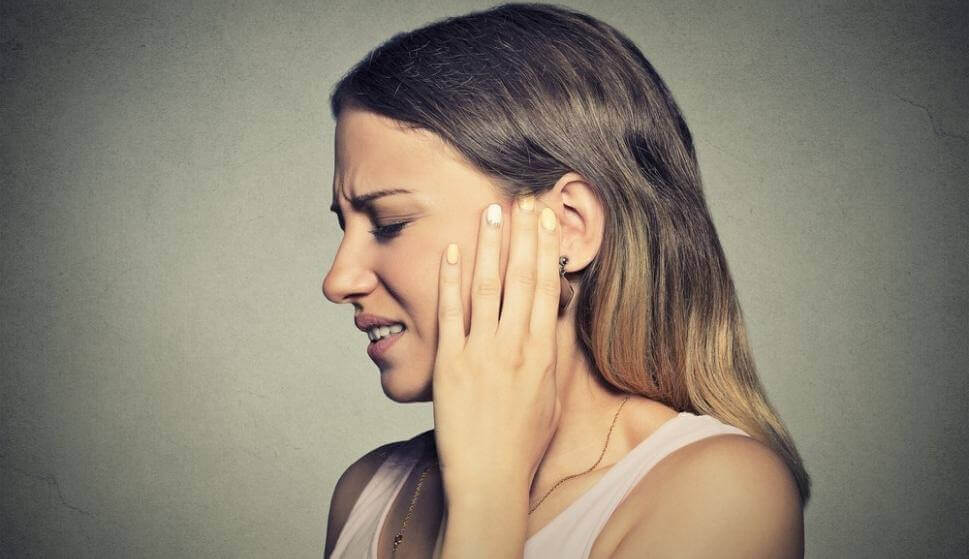Misophonia: the Hatred of Certain Sounds

To learn more about misophonia and everything it entails, here’s a story:
“I’ve been like this almost all of my life, it’s horrible. I get upset when I’m on the bus or any other kind of transportation. If I’m not wearing earplugs or listening to music through headphones, I get nervous and irritable. Hearing keys clicking on a keyboard, someone chewing gum, biting the fork while they’re eating, slurping their soup… and there’s so many more examples. I dream of one day being able to be at peace and not have to be alone or with my headphones on, I don’t want to make faces at people who do it. I can’t have a normal relationship, because who wouldn’t hate someone like me?”
What you just read is a real tale of a person with misophonia. But, what is misophonia? Basically, misophonia is defined as a great sensitivity (hypersensitivity) to a certain type of sound or sounds.
“The reaction is mostly of anger, not disgust. The dominant emotion is anger. It seems like a normal response, but then it happens excessively.”
-Dr. Sukhbinder Kumar, Newcastle University-
You have a low tolerance to sound, in addition to hyperacusis and phonophobia. People with misophonia tend to have a physical reaction to certain sound stimuli. The word “misophonia” was coined by doctors Pawel Jastreboff and Margaret Jastreboff in 2000. The term derives from the Greek “misos”, which means aversion, and “foné”, which means sound. Thus, you could also define misophonia as “selective sensitivity to sound.”

What exactly is misophonia?
As we’ve mentioned, misophonia consists of a reduction in a person’s tolerance to certain sounds. People with this condition can’t tolerate certain specific noises. What for most people would just be background noise, to others are profoundly unpleasant sounds.
Noises such as chewing, the clinging of utensils, or the drumming of fingers on a desk are unbearable for people with misophonia. Some sounds that provoke this discomfort have a relatively low frequency, around 40 or 50 decibels.
This animosity towards sounds is worse if the people producing them are close to the person with misophonia. An elementary school teacher from Baltimore, Meredith Rosol, was diagnosed with misophonia. She says that she can no longer eat with her parents. She can only share a meal with them if she’s wearing earplugs.
One problem these people face is how hard it is to diagnose. Therefore, it’s also hard to properly treat. Until recently, it hadn’t even been classified as an illness.
“These patients become saturated when they hear a sound that triggers the reaction.”-Dr. Sukhbinder Kumar-
Is misophonia a psychological disorder?
Some people argue that misophonia is not a psychological disorder, that it’s not a phobia. It would then be treated as a neurological condition. The neurological disorder is probably located in certain structures within the central nervous system.
Where this “visceral“ reaction emerges from exactly is still unknown. It might have something to do with damage to the medial prefrontal cortex, similar to what happens in another medical condition called tinnitus. Tinnitus is a phantom ringing or another type of phantom noise in the ear, commonly originating in hair cell damage in the cochlea.

Symptoms of misophonia
People with misophonia feel discomfort, anger, rage, panic, fear… They may even imagine attacking the person producing the noises. The sounds may be as normal and common as those produced by eating, drinking, sipping, breathing, coughing, etc.
These people also feel discomfort by other repetitive sounds, like chewing gum, blowing bubbles, cracking bones, etc. They manifest anxiety and avoidance behaviors when they hear these noises. In severe cases, the individual may become so intolerant that they present aggressive behaviors towards the objects, people, or animals involved.
People with misophonia sometiems develop an authentic obsession with these noises. Then the hypersensitivity extends and an intolerance towards these noise-producing people or situations may be created.
“I feel that there’s a threat and have the desire to attack. I go into ‘fight or flight’ mode.”
-Mary Jefferson, an individual with misophonia-
Psychological problems that derive from misophonia
People with misophonia may develop severe psychological problems. They may become aggressive or make the decision to avoid any associated situations. Thus, they may isolate themselves and feel a profound sense of solitude.
Due to the lack of resources available to treat their ailment, social reintegration is not easy. They resort to wearing earplugs or headphones. Yet they cannot solve the underlying problem.
“Anyone eating french fries is always going to upset me. The sound of a plastic bag in the wind is enough to trigger a reaction. I immediately think, ‘Oh, God, what is that sound? I need to leave or make it stop’.”
– Paul Clark, an individual with misophonia-
How common is this condition?
The exact prevalence of misophonia is unknown. People with it suggest that it’s more common than what’s officially acknowledged. Auditory issues are more common than you’d think. Many times there is treatment, but other times it’s much harder to treat, especially when the problem is hypersensitivity to certain sounds because it involves an interaction between physical and psychological factors.
“It’s still not very clear just how common this disorder is, since there’s no clear way to diagnose it and it was discovered only recently.”
-Doctor Sukhbinder Kumar-

What is the treatment for misophonia?
There is no known cure for misophonia. Some patients have found cognitive-behavioral therapy useful, as well as tinnitus retraining therapy. For others, these techniques have not been so effective. Many doctors are still unaware of the existence of this disorder, so in many cases they won’t diagnose it.
To learn more about misophonia and everything it entails, here’s a story:
“I’ve been like this almost all of my life, it’s horrible. I get upset when I’m on the bus or any other kind of transportation. If I’m not wearing earplugs or listening to music through headphones, I get nervous and irritable. Hearing keys clicking on a keyboard, someone chewing gum, biting the fork while they’re eating, slurping their soup… and there’s so many more examples. I dream of one day being able to be at peace and not have to be alone or with my headphones on, I don’t want to make faces at people who do it. I can’t have a normal relationship, because who wouldn’t hate someone like me?”
What you just read is a real tale of a person with misophonia. But, what is misophonia? Basically, misophonia is defined as a great sensitivity (hypersensitivity) to a certain type of sound or sounds.
“The reaction is mostly of anger, not disgust. The dominant emotion is anger. It seems like a normal response, but then it happens excessively.”
-Dr. Sukhbinder Kumar, Newcastle University-
You have a low tolerance to sound, in addition to hyperacusis and phonophobia. People with misophonia tend to have a physical reaction to certain sound stimuli. The word “misophonia” was coined by doctors Pawel Jastreboff and Margaret Jastreboff in 2000. The term derives from the Greek “misos”, which means aversion, and “foné”, which means sound. Thus, you could also define misophonia as “selective sensitivity to sound.”

What exactly is misophonia?
As we’ve mentioned, misophonia consists of a reduction in a person’s tolerance to certain sounds. People with this condition can’t tolerate certain specific noises. What for most people would just be background noise, to others are profoundly unpleasant sounds.
Noises such as chewing, the clinging of utensils, or the drumming of fingers on a desk are unbearable for people with misophonia. Some sounds that provoke this discomfort have a relatively low frequency, around 40 or 50 decibels.
This animosity towards sounds is worse if the people producing them are close to the person with misophonia. An elementary school teacher from Baltimore, Meredith Rosol, was diagnosed with misophonia. She says that she can no longer eat with her parents. She can only share a meal with them if she’s wearing earplugs.
One problem these people face is how hard it is to diagnose. Therefore, it’s also hard to properly treat. Until recently, it hadn’t even been classified as an illness.
“These patients become saturated when they hear a sound that triggers the reaction.”-Dr. Sukhbinder Kumar-
Is misophonia a psychological disorder?
Some people argue that misophonia is not a psychological disorder, that it’s not a phobia. It would then be treated as a neurological condition. The neurological disorder is probably located in certain structures within the central nervous system.
Where this “visceral“ reaction emerges from exactly is still unknown. It might have something to do with damage to the medial prefrontal cortex, similar to what happens in another medical condition called tinnitus. Tinnitus is a phantom ringing or another type of phantom noise in the ear, commonly originating in hair cell damage in the cochlea.

Symptoms of misophonia
People with misophonia feel discomfort, anger, rage, panic, fear… They may even imagine attacking the person producing the noises. The sounds may be as normal and common as those produced by eating, drinking, sipping, breathing, coughing, etc.
These people also feel discomfort by other repetitive sounds, like chewing gum, blowing bubbles, cracking bones, etc. They manifest anxiety and avoidance behaviors when they hear these noises. In severe cases, the individual may become so intolerant that they present aggressive behaviors towards the objects, people, or animals involved.
People with misophonia sometiems develop an authentic obsession with these noises. Then the hypersensitivity extends and an intolerance towards these noise-producing people or situations may be created.
“I feel that there’s a threat and have the desire to attack. I go into ‘fight or flight’ mode.”
-Mary Jefferson, an individual with misophonia-
Psychological problems that derive from misophonia
People with misophonia may develop severe psychological problems. They may become aggressive or make the decision to avoid any associated situations. Thus, they may isolate themselves and feel a profound sense of solitude.
Due to the lack of resources available to treat their ailment, social reintegration is not easy. They resort to wearing earplugs or headphones. Yet they cannot solve the underlying problem.
“Anyone eating french fries is always going to upset me. The sound of a plastic bag in the wind is enough to trigger a reaction. I immediately think, ‘Oh, God, what is that sound? I need to leave or make it stop’.”
– Paul Clark, an individual with misophonia-
How common is this condition?
The exact prevalence of misophonia is unknown. People with it suggest that it’s more common than what’s officially acknowledged. Auditory issues are more common than you’d think. Many times there is treatment, but other times it’s much harder to treat, especially when the problem is hypersensitivity to certain sounds because it involves an interaction between physical and psychological factors.
“It’s still not very clear just how common this disorder is, since there’s no clear way to diagnose it and it was discovered only recently.”
-Doctor Sukhbinder Kumar-

What is the treatment for misophonia?
There is no known cure for misophonia. Some patients have found cognitive-behavioral therapy useful, as well as tinnitus retraining therapy. For others, these techniques have not been so effective. Many doctors are still unaware of the existence of this disorder, so in many cases they won’t diagnose it.
This text is provided for informational purposes only and does not replace consultation with a professional. If in doubt, consult your specialist.







